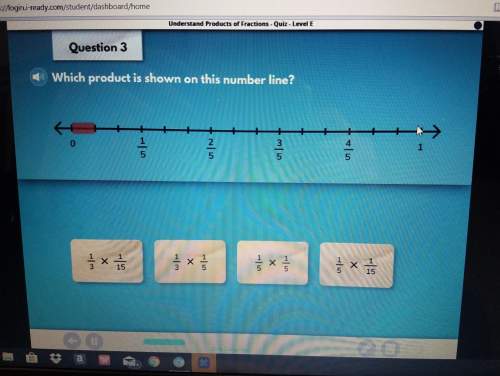Find the probability of having 2,3, or 4
successes in five trials of a binomial
experiment in...

Mathematics, 09.04.2021 16:20 boi1234520
Find the probability of having 2,3, or 4
successes in five trials of a binomial
experiment in which the probability of
success is 40%.
Round to the nearest tenth of a percent.
percent.

Answers: 1
Another question on Mathematics

Mathematics, 21.06.2019 17:30
Lance lived in portugal and brazil for a total of 14 months to learn portuguese. he learned an average of 130 new words per month when he lived in portugal, and an average of 150 new words per month when he lived in brazil. in total he learned 1920 new words. write a system of equations to represent the situation. use x to represent portugal, and y to represent brazil
Answers: 1


Mathematics, 21.06.2019 22:00
Asystem of linear equations with more equations than unknowns is sometimes called an overdetermined system. can such a system be consistent? illustrate your answer with a specific system of three equations in two unknowns. choose the correct answer below. a. yes, overdetermined systems can be consistent. for example, the system of equations below is consistent because it has the solution nothing. (type an ordered pair.) x 1 equals 2 comma x 2 equals 4 comma x 1 plus x 2 equals 6 b. no, overdetermined systems cannot be consistent because there are fewer free variables than equations. for example, the system of equations below has no solution. x 1 equals 2 comma x 2 equals 4 comma x 1 plus x 2 equals 12 c. yes, overdetermined systems can be consistent. for example, the system of equations below is consistent because it has the solution nothing. (type an ordered pair.) x 1 equals 2 comma x 2 equals 4 comma x 1 plus x 2 equals 8 d. no, overdetermined systems cannot be consistent because there are no free variables. for example, the system of equations below has no solution. x 1 equals 2 comma x 2 equals 4 comma x 1 plus x 2 equals 24
Answers: 3

Mathematics, 21.06.2019 23:00
Acaterer knows he will need 60, 50, 80, 40 and 50 dinner napkins on five successive evenings. he can purchase new napkins initially at 25 cents each, after which he can have dirty napkins laundered by a fast one-day laundry service (i.e., dirty napkins given at the end of the day will be ready for use the following day) at 15 cents each, or by a slow two-day service at 8 cents each or both. the caterer wants to know how many napkins he should purchase initially and how many dirty napkins should be laundered by fast and slow service on each of the days in order to minimize his total costs. formulate the caterer’s problem as a linear program as follows (you must state any assumptions you make): a. define all variables clearly. how many are there? b. write out the constraints that must be satisfied, briefly explaining each. (do not simplify.) write out the objective function to be minimized. (do not simplify.)
Answers: 1
You know the right answer?
Questions








English, 19.10.2020 14:01

Mathematics, 19.10.2020 14:01


Social Studies, 19.10.2020 14:01












